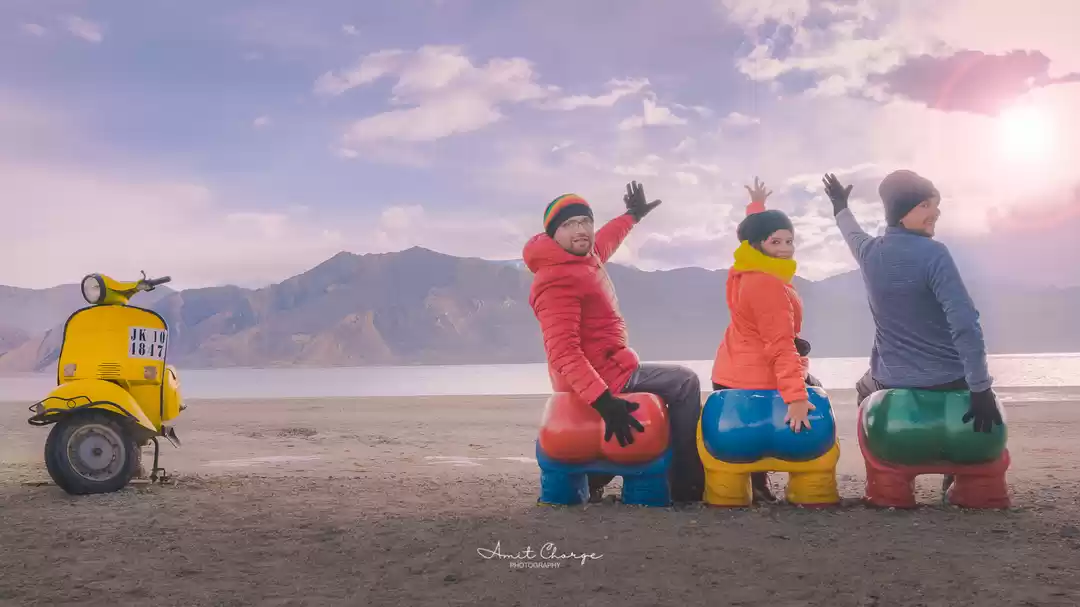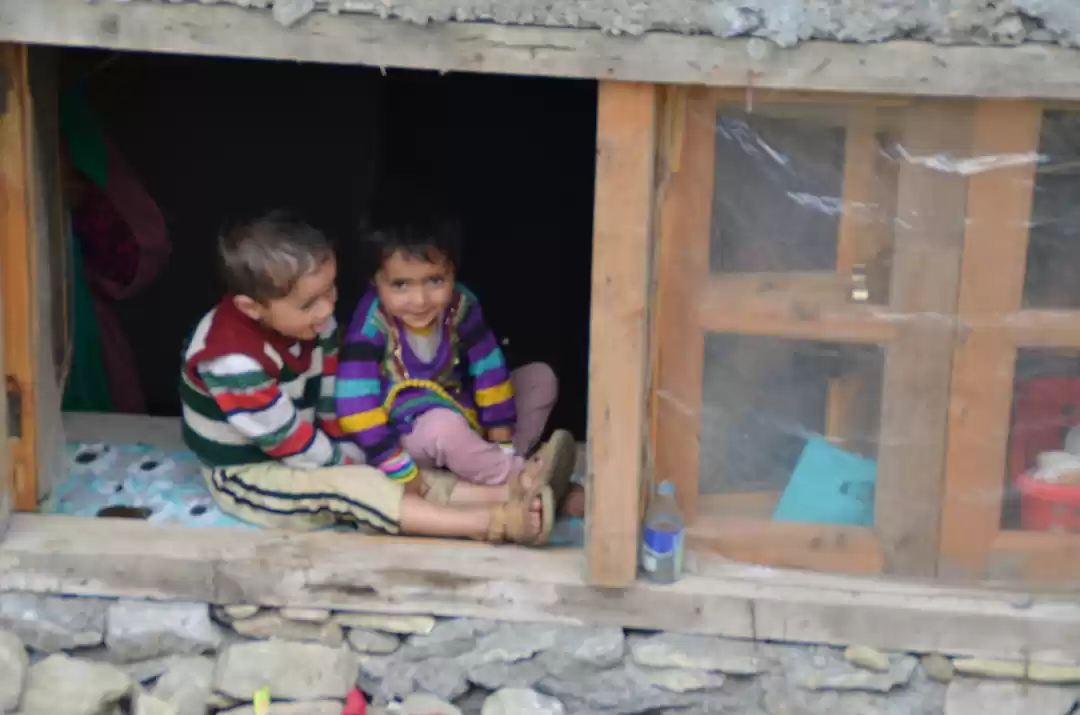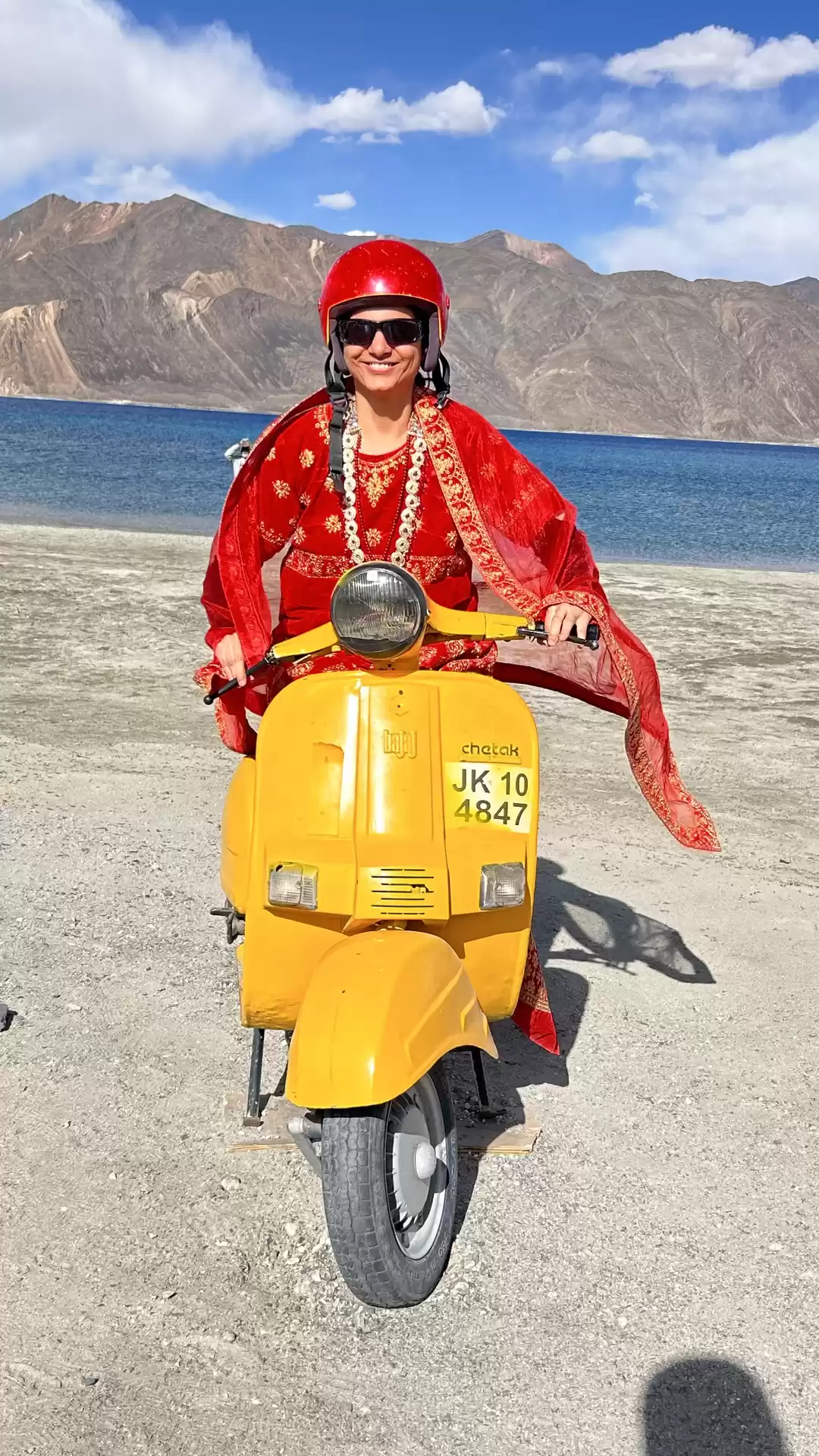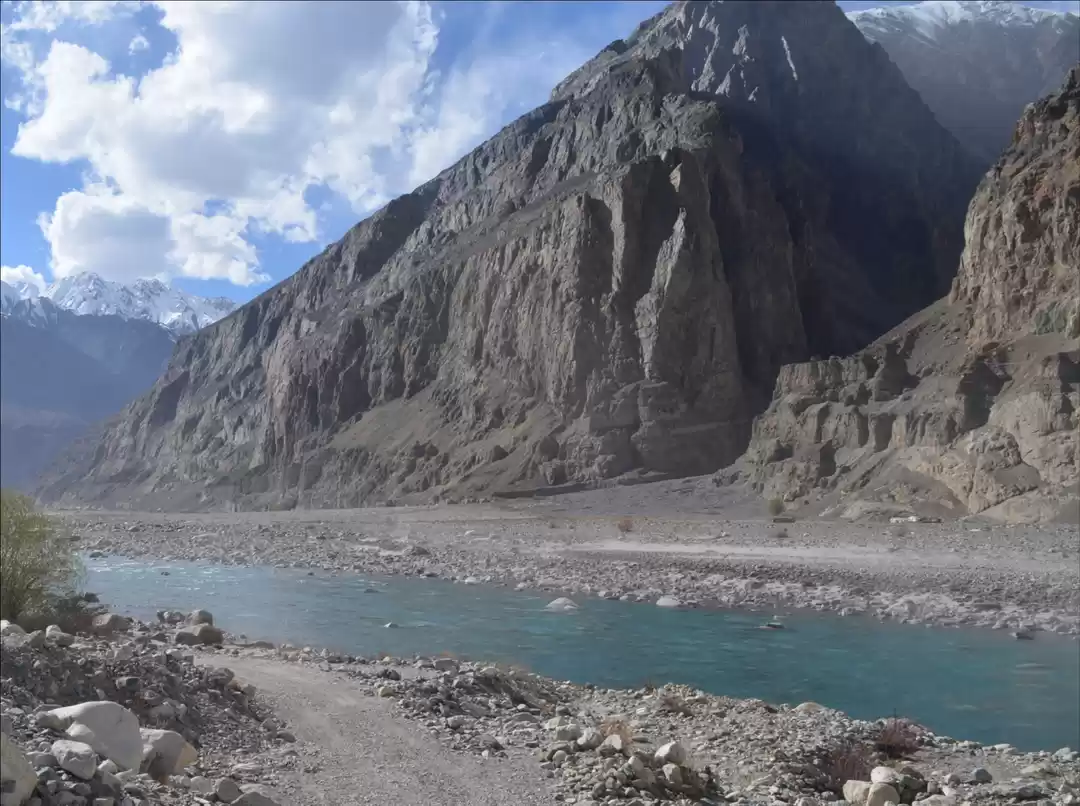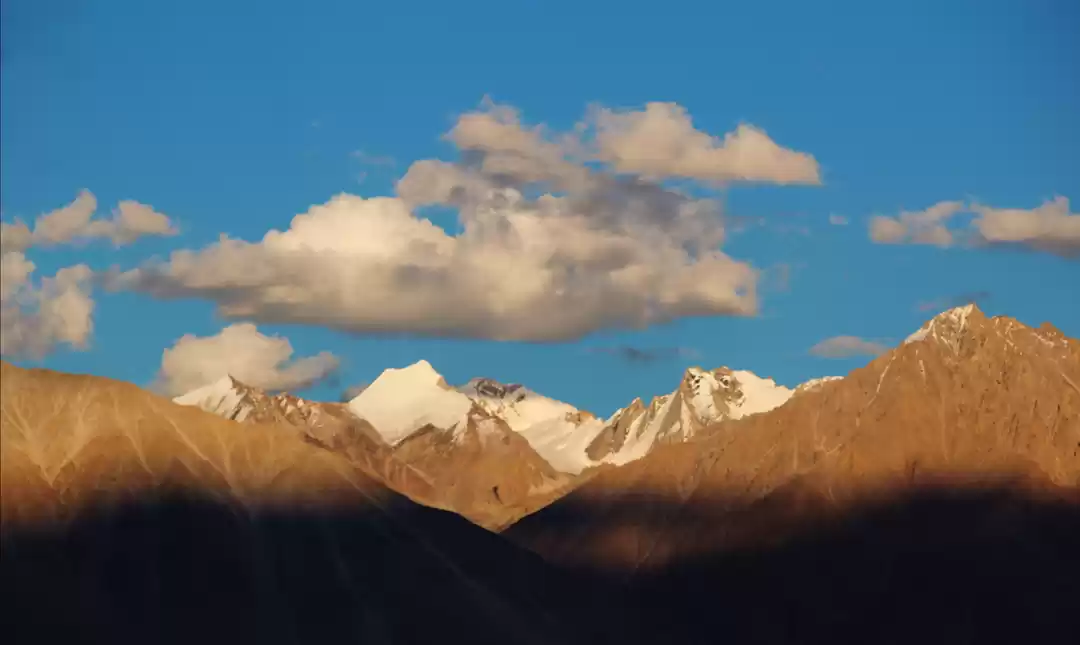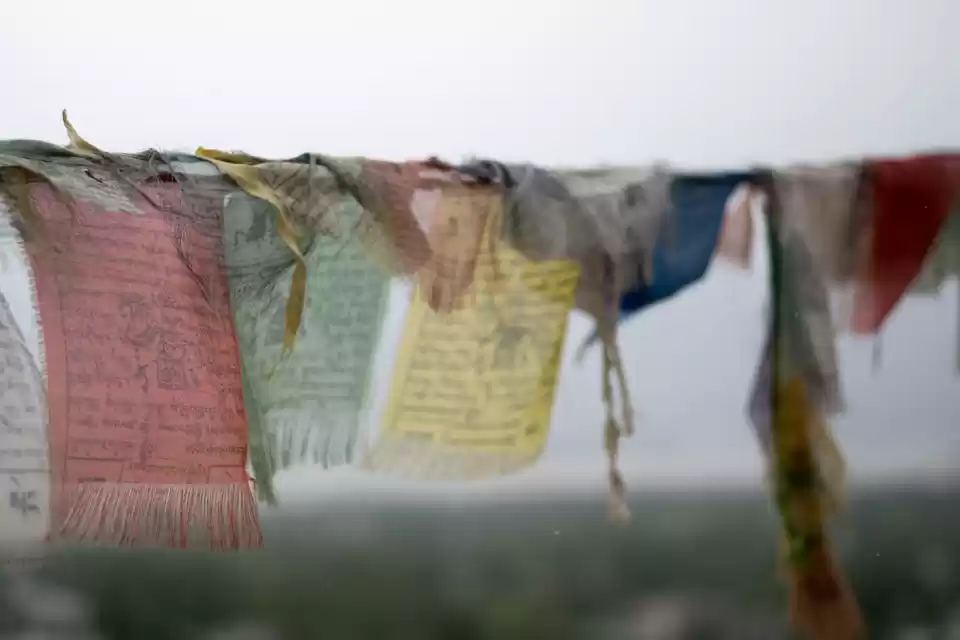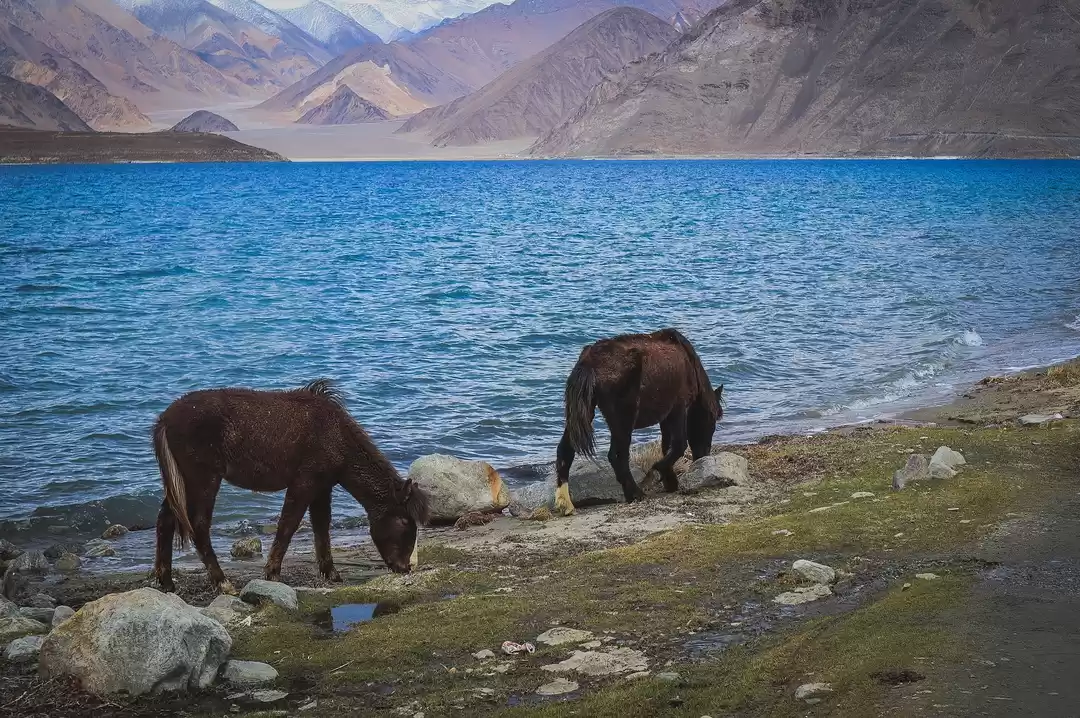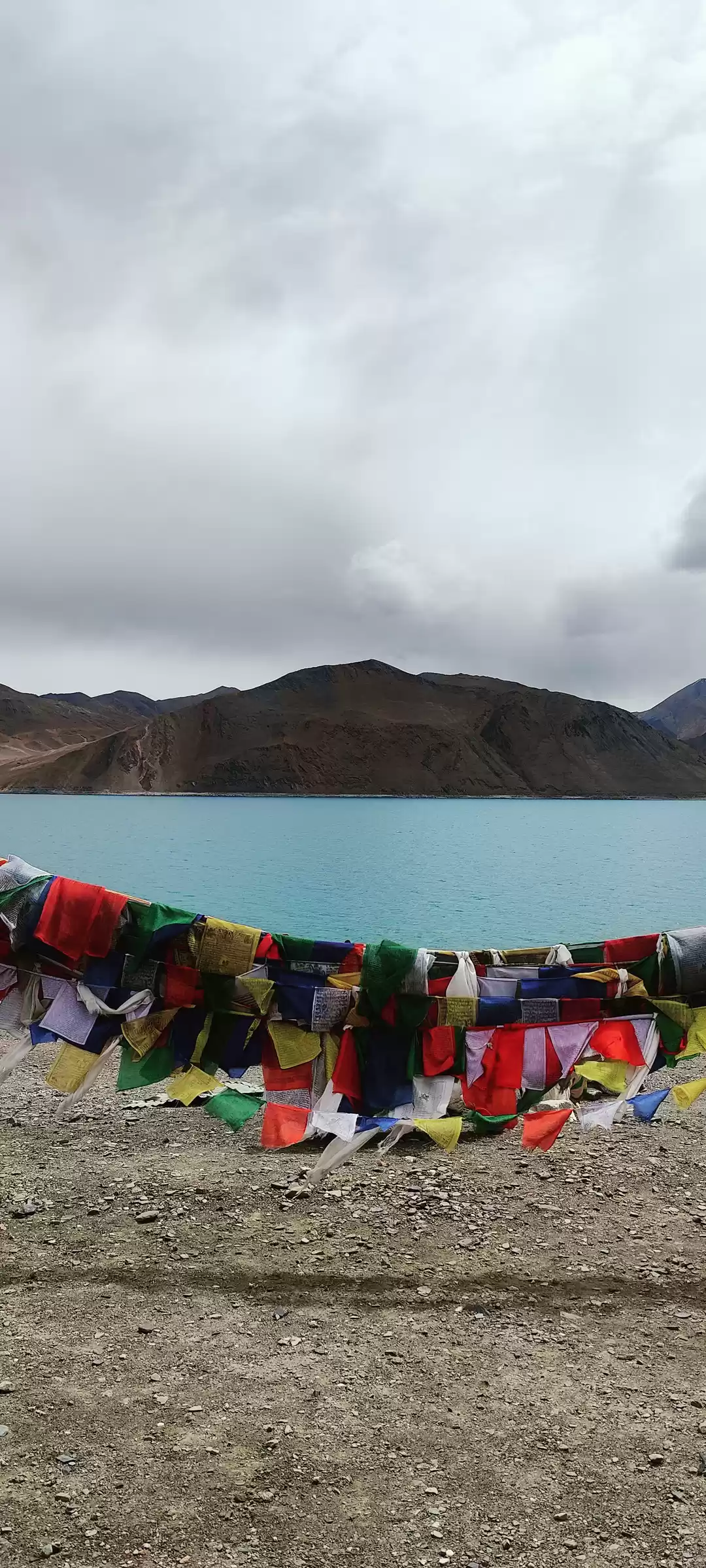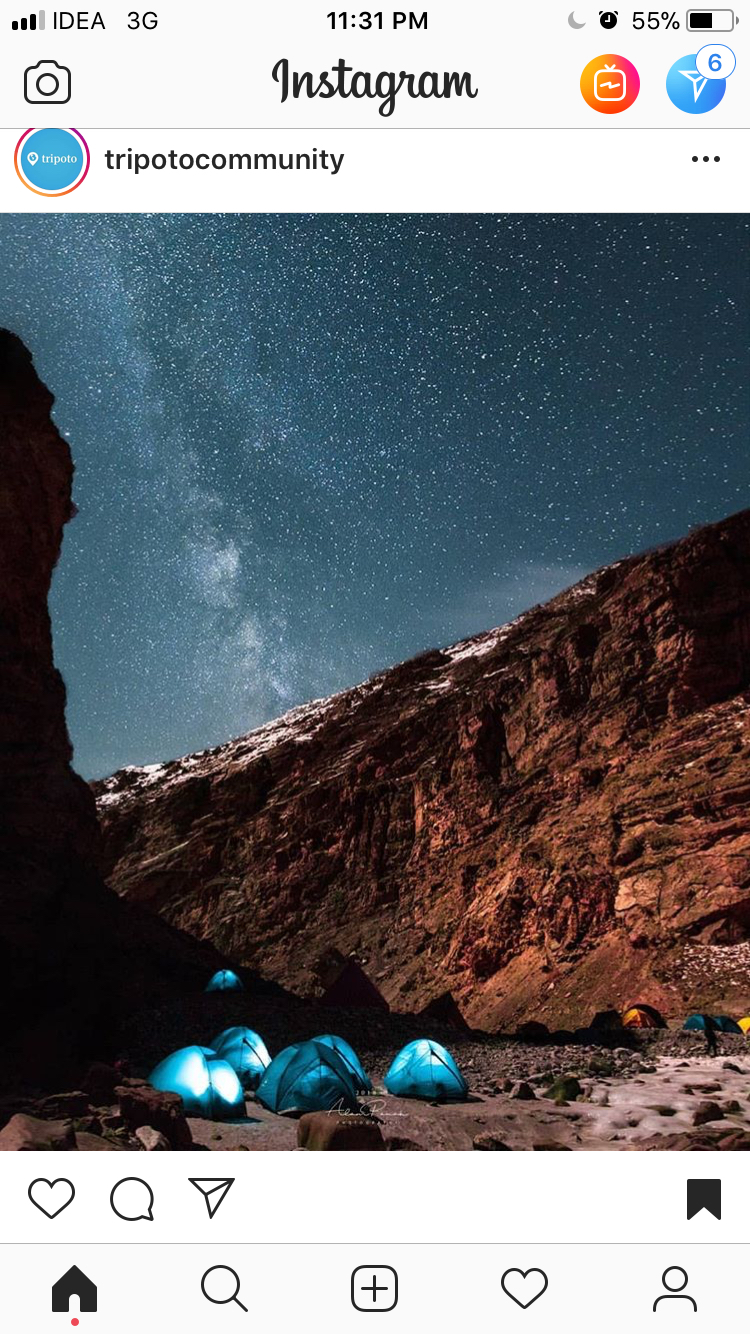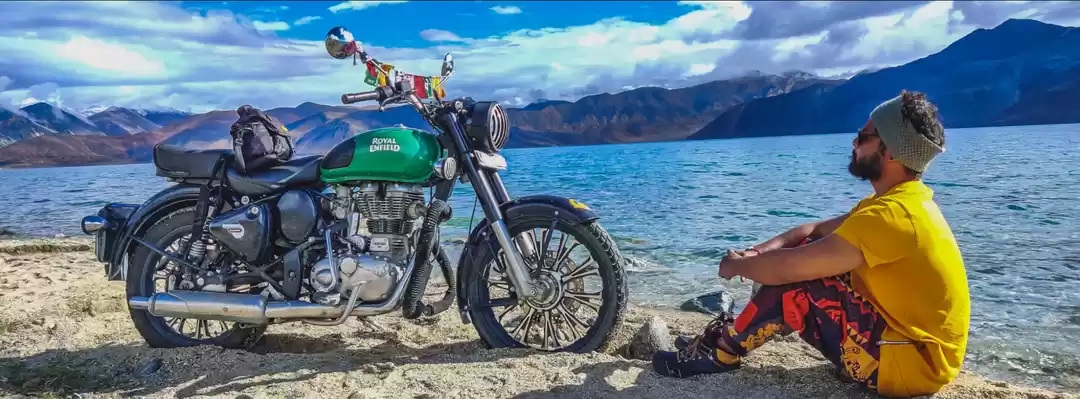
'A trip to Ladakh is about the journey not the destination' - Aanandita Datta
My wife and I love travelling. She's normally the planner who I suspect loves planning more than the travelling itself. In our jobs, we almost always have to plan our holidays ages in advance as there is the usual handing over etc which needs to be done but this time we realised we had a week when both of us could get 3 days off and so we decided, let's head to the hills and decided Srinagar was the place to visit. As we sat in the evening trying to plan an itinerary, book tickets etc, we chanced upon this blog of a person writing about his visit to Leh, Ladakh and we were floored.
For the completely uninitiated, Ladakh is probably one of the most beautiful and distinct geographies in the world, however the sheer height of the place can also be a worry. Oblivious to this and regular mountain travellers, we very happily booked our tickets especially happy that there is a direct flight from Mumbai to Leh, the capital of Ladakh.
Our 6 day itinerary
Day 1: Mumbai to Leh and acclimatisation
Day 2: Leh Hall of fame, Magnetic hill, Confluence of Indus and Zanskar, Ladakh palace and Leh monasteries
Day 3: Travel to Nubra Valley via Khardung La and camel ride on the sands of Nubra.
Day 4: Turtuk on the India Pakistan border*
Day 5: Visit to Pangong lake via Chang La and back to LehDay 6: Leh to Mumbai
*originally we had planned an overnight stay at Pangong, but the greed of seeing Turtuk a relatively unvisited part of Ladakh plus night temperatures touching 0 deg caused a change in plan
Pre -preparation - We started our Diamox 2 days before the trip, starting with one tablet per day which would then become 2 (Please ask your doctor).
Necessities: We also carried ORS cartons and electral (Hydration is very important to avoid AMS) and a host of medicines. Leh market itself is well stocked, but the rest of Ladakh might not stock some meds. We also carried our winter wear. Leh can also get quite warm and there is the bright sun. Always carry a strong sunscreen, preferably one which moisturises too. Plan to wear layered clothing as you can get snow on the passes and extreme heat when you travel down. Also the temperature difference between a cloudy day and a sunny day is huge. Please also carry battery chargers and some form of a torch as electricity can be an issue in most hotels and the ones in Nubra and Pangong almost always have power issues.
Permit: You need a special permit to travel to many of these places including Pangong and the Indo - Pak border near Turtuk. The Indo Pak border here may not be accessible to foreigners. The permit just needs a copy of your Aadhar card or equivalent national id card. Visit this site for details regarding the permit which can be obtained online . Since most of you would acclimatise for a day at least that would be sufficient time for your hotel to get you the permit. Please remember some areas you visit like Pangong lie near the international border and are sensitive areas. Click here for more details.
Connectivity: Your existing telephone will not work in Leh unless it is BSNL and in some areas Airtel. Vodafone didn't work anywhere there for both of us. Internet is terribly slow and keeps going down, including broadband at the best hotels.
Places to visit: Besides Pangong lake which is a must visit, do try to fit in Turtuk. Local Leh in itself doesn't need much time. Kargil could be an addition if you are coming via Srinagar. You have to go through Khardung La and Chang La if you travel to Nubra valley
Our Route:
Leh to Hunder (Nubra Valley) via Khardung La - Hunder - Turtuk - Hunder - Chang La - Pangong - Leh (665 km)
Then we began to read a bit more in depth to understand places to visit when we chanced upon AMS - Acute mountain sickness. AMS is what happens when the body operates at altitudes above 10,000 ft. This usually is an issue for mountaineers, however Leh is unique in that the entire city is situated around 11,500 ft (3524 m) above sea level which is just 1,500 feet lesser than the average height of the Alps. Now the jury is out on what best helps you operate in such conditions but there is agreement that the best route to reach Leh which gives you opportunity to acclimatise is the Srinagar - Kargil - Leh route as you climb gradually and spend a night at a high altitude before reaching Leh.
Now broadly AMS happens due to the scarcity of oxygen at higher altitudes (the reason flights are pressurised), therefore there are a few things that can cause it. They are poor fitness , pre-existing conditions(bad asthma), lack of acclimatisation. Basically if you wheeze climbing up a few floors at sea level, suggest you avoid Leh. Incidentally Sonam, the owner of this guesthouse we stayed at said that AMS has happened even to locals. It is curable basis getting the person to an army hospital and rarely fatal. So be prepared. One way to prepare is diamox, which basically increases your rate of breathing and therefore allows for more oxygen in the body. However this is a salt that may have side effects, so please consult your doctor. Starting your diamox before you leave for Leh is suggested and that's what we did. I had a minor tingling sensation in my hands and feet, my wife Aanandita didn't. There are countless people who don't have diamox and are absolutely fine however being a once in a lifetime journey we didn't want to take any chances.
Day 1: Travel to Leh and acclimatisation
Anyway post a bout of a combination of Flus last year and courtesy the increasing pollution, my last health checkup showed up possible mild asthma basis my peak flow test. Apparently Asthma is getting common in Urban India said the tester, (more reason for you to visit Leh now while your lungs are not full of soot). As per the suggested thing, I went to my GP who certified me fit to travel . Weight also matters here as the more weight you carry, the more effort which with lesser oxygen in Ladakh makes life difficult. My wife meanwhile had planned out an itinerary which factored visiting every beautiful place in Ladakh in 6 days

We boarded our Go Air flight from Mumbai at some unearthly hour (Tip: Book a seat near the window as the view before landing is amazing). We did not have a window seat but I got a view of the mountains below courtesy a slightly empty plane. My wife Ditta slept through the landing. I was awake both with excitement and a little fear about AMS. With asthma and being overweight I was a prime candidate to get AMS. I have fallen sick once on holiday in Vietnam (actually fallen sick each time I visited Vietnam even on work) and trust me it's not a good feeling.
Leh airport is beautiful (Military airport so no photography allowed). Surrounded by hills we liked what Leh looked like. I gingerly stepped down the steps, and entered an airport stuck in the 70's (Leh's infrastructure was further impacted by the floods in 2010). Leh for all it has is propped up by the army who work hard to keep it working. We pick up our luggage and waited for the cab.
Anyway after waiting for 5 min and feeling a little helpless with no phone or internet connectivity, our driver arrived and said Juley, which was weird because it was October. Juley is your one word initiation to Ladakh. It is the word for greeting in Ladakh. It can be used in greeting and in farewell. We were packed into a minivan and driven to our hotel
Mentokling Guesthouse
Mentokling Guesthouse is a very simple guesthouse very unlike the usual hotels we visit but it came highly rated and recommended by visitors largely because of the father and son owners of the place. Sonam the father is a mountaineer who has climbed the everest and Sonam the son is a super helpful restaurateur who along the 3 days we stayed there told us a lot about the difficulty in constructing and maintaining a hotel in a place with a very small tourist season. The cost of construction in Leh is high courtesy the cost of bringing materials there. In many ways this was a story we had heard in Bhutan too. Interestingly as in Manali a place where I worked in, the staff actually worked here during summer and Goa in winter. Dhava the cook told us that he works in Simrose in Goa, a place we plan to visit. When we asked him which place did he prefer to stay, he wasn't sure.
Anyway a hot cup of Ginger, lemon and honey later we were ready to check in but our room wasn't ready. Being quite the hypochondriac I was sure I would get AMS. Sonam ensured us that it wouldn't happen basis a portable oximeter. This is a small device which is placed on your finger. Interestingly even we had carried one in our medical kit. the oximeter basically tells you if your oxygen has dropped below a certain number (75 was the benchmark), which then means you can go to a hospital where they would admit you for AMS.
After assuring us, he told us stories of all the people who had got AMS and how they were rushed to treatment and then even resumed the travel possibly to help us feel better but it didn't help. Then we climbed to the first floor. This is when we first realised the impact of being at a high altitude. Climbing up just a flight of stairs had us a bit breathless, me more than Ditta my wife.
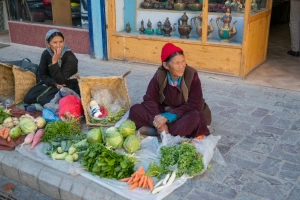
They say one must rest the whole of the first day, which we did, however one must not sleep during the day, which my wife did not adhere to. We (at least me) drank copious amounts of ORS and little food. Sonam told us that he would check our oxygen levels at 1400 to see whether we had AMS. We got our oxygen levels checked had a light meal in the attached restaurant and were back resting. As per his instructions we were to step out only in the evening, when we stepped out to visit the beautiful bazar.
Day 2: Leh Hall of fame, Magnetic hill, Confluence of Indus and Zanskar, Ladakh palace and Leh monasteries
Leh like most hill stations has this small little 'mall roadish' bazaar. The highlights of the bazar are some interesting stores and a handicrafts market at the end. We were visiting in mid September which is at the fag end of the Ladakh tourist season. Shoulder season is when we do most of our travelling to avoid crowds and thankfully Leh too was not too crowded. A little cold which is something we like. From the Bazar you can see the Leh palace and the monasteries on the nearby mountains. One interesting place to visit in the Bazar is the Ladakh Jo Kang monastery
Our first place we visited was the hall of fame, which is a monument dedicated to the Indian army. It is a good initiation into the Indian army with everything Leh is after all the place where the Indian army acclimatises for posting at Siachen, the world's highest and most inhospitable battlefield. The soldiers train for months to get fit to live there and these are people who are already super fit. The monument though is purely military and must be visited only if you have an interest in the same. The back has a beautiful memorial and an Ashoka pillar.
Magnetic hill was our next place of visit. Legend has it that if you keep a car here it automatically moves up basis the magnetic pull of the mountain. however put it down to cars which are not that magnetic or changing conditions but cars nowadays dont move on their own. The reality of the hill though is supposed to be a downward slope which causes cars to roll down.
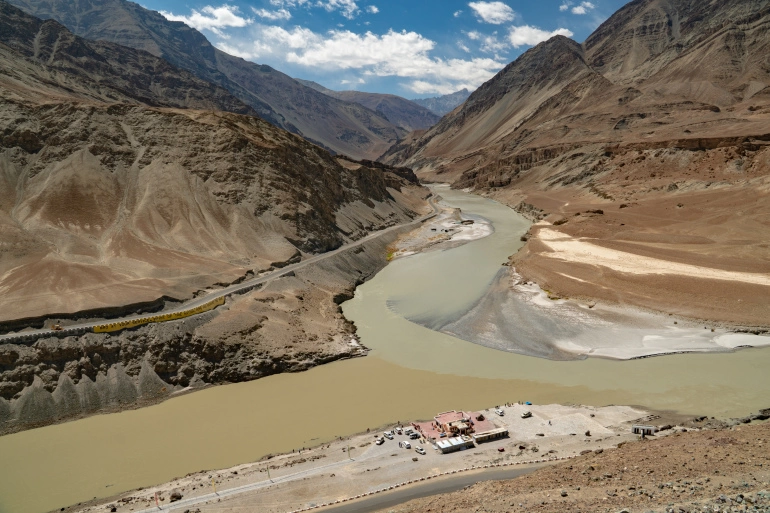
We then headed to the confluence of Indus and Zanskar which courtesy a later visit looked much more muddy but you can clearly see two different coloured water bodies meeting. Zanskar is the lighter coloured river converging into the Indus.
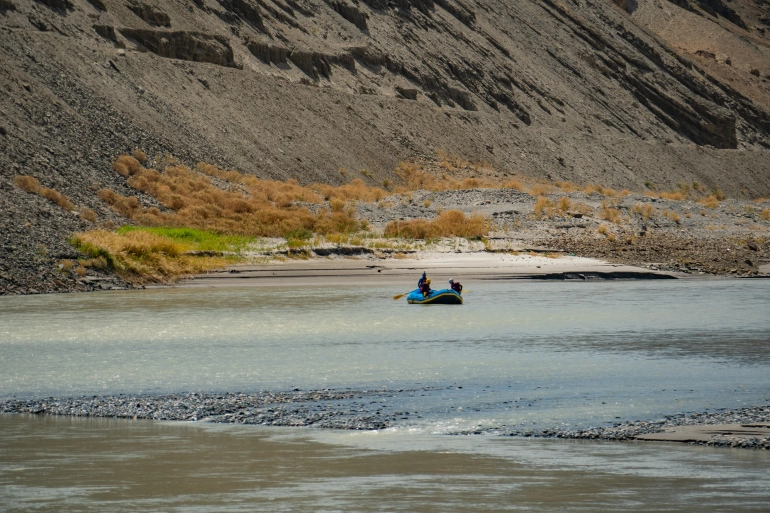
The confluence also has facilities for river rafting, which starts upstream on the Zanskar and has an interesting route ending at Sangam Cafe which is where we and our driver Tashi grabbed some Maggi which was quite tasty. Sangam Cafe is also a nice place to sit.

From Sangam Cafe we came back and had our lunch at German bakery which was quite nice. Post that visited Leh palace which really needs to be maintained a little better and then Namgyal Tsemo Gompa and Shanti Stupa. The top of Namgyal Gompa is quite a climb but the view is absolutely worth it. The sight of fluttering prayer flags and the entire valley below is an amazing unmissable view and definitely a place to watch the sunset at Leh.
We ended our day with dinner at Bon Appetit, which was probably the best eatery we visited at Leh. Bon Appetit is located in an inner road of Leh and the walk to it is as interesting as the place itself. It looks like an open chalet with great food. Suggest that you make reservations before visiting.
Day 3: Travel to Nubra Valley via Khardung La and camel ride on the sands of Nubra.
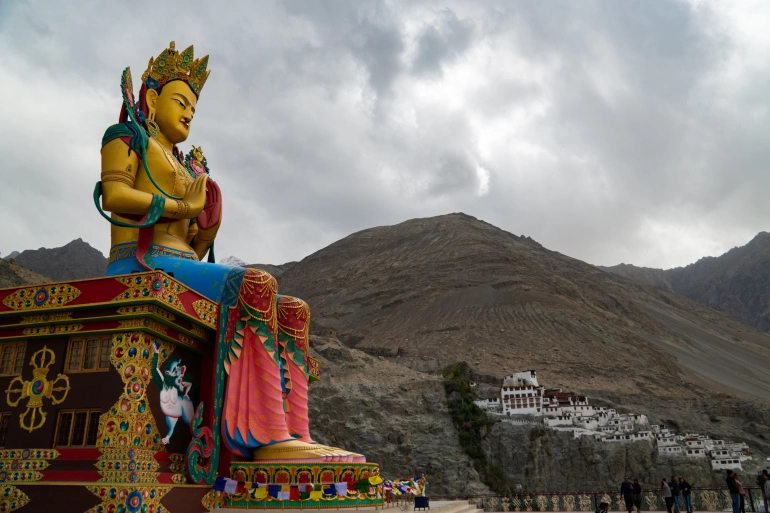
Khardung-La is the highest motorable pass in the world. While the army roads are mostly fantastic in fact better than Mumbai roads, the elements cause damage to the road on a regular basis. The road to Nubra valley has some of the most beautiful scenery one can see. The geological conditions are something we have not seen anywhere else. Rocks of all colours, copper, green, purple, grey and a combination of beautiful streams and greenery, rock faces, snow clad mountains and the dessert at Hunder which is where we were headed. Sonam from Mentokling guesthouse was most helpful. Not only did he arrange for the cab but also provided us an emergency oxygen cylinder and his own bsnl card. The cylinder was provided just in case we planned to stay overnight at Pangong as per our original itinerary. Pangongs temperature had dropped down to 2 deg C courtesy some snowfall which means staying there could be a little dicey.
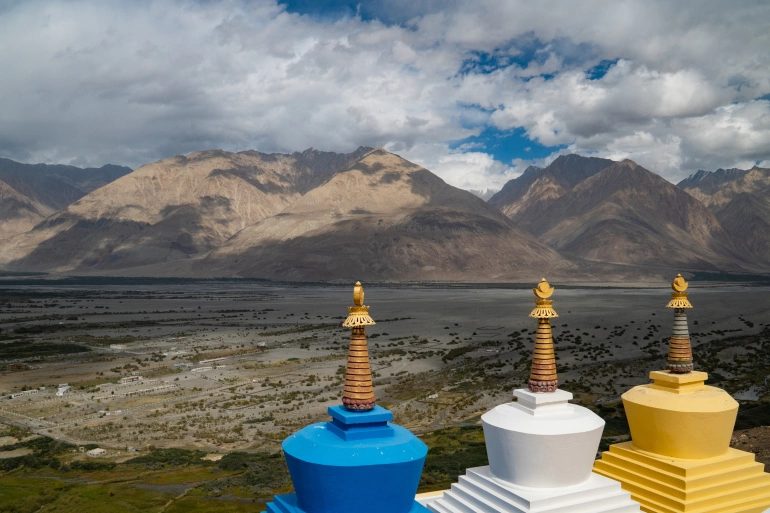
The first place we visited was the Diskit monastery, which has this huge statue of a female deity called Jampa Buddha behind which is the monastery.
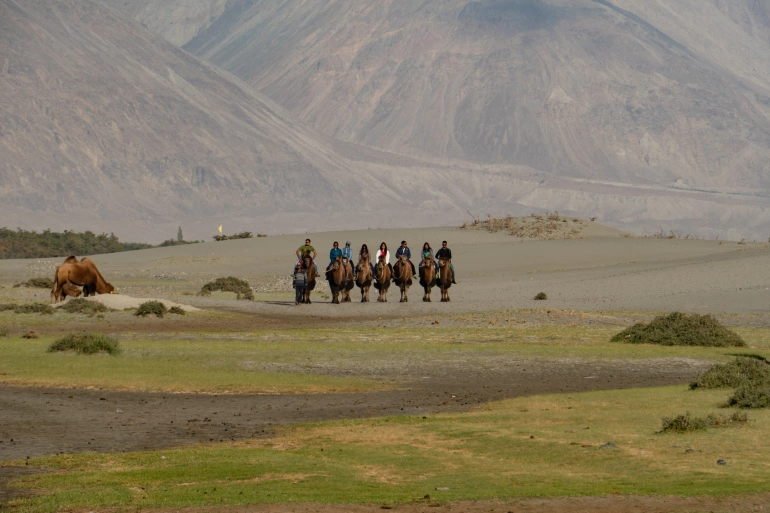
The view from here is pretty amazing, with the entire Nubra valley visible. Nubra valley has a combination of sand dunes, greenery, the river and rocks against the background of great mountains. A definite must visit if you travel to Nubra.
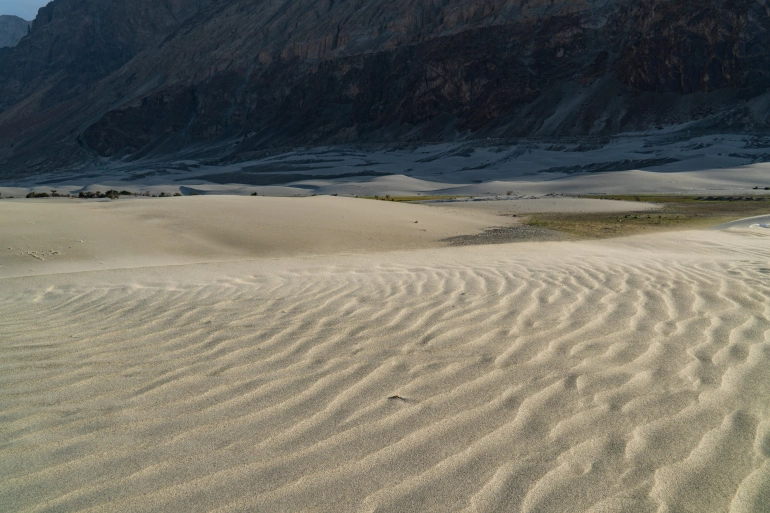
Hunder is known for it's sand desserts and bactrians camels who unfortunately are now used to take joy rides. Since we are Ying and Yang, my wife was most excited to take a ride and I clicked some good pics of her riding against the dessert.
Day 4: Turtuk on the India Pakistan border
The dunes in themselves are most beautiful against the mountains. This is one of the highest altitude deserts in the world and relatively untouched. We stayed at Hunder Serai which is a campsite. As with a lot of Ladakh, electricity is patchy. In fact Hotels of Hunder depend on generators which work only during the day and are in fact switched off at night, which is why it's a good idea to have a charger with you at all times as charging your mobiles and the camera could be an issue.
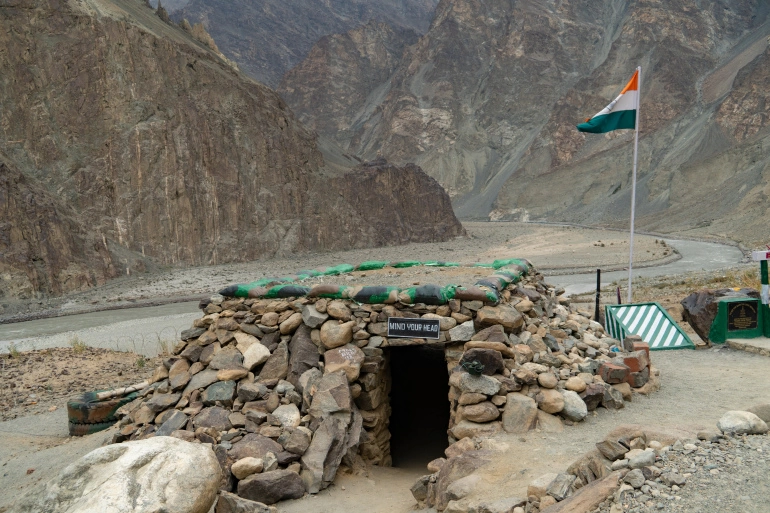
Unlike Kargil which is an Indian territory which Pakistan temporarily occupied for some time, there are 800 sq km of Gilgit Baltistan, which were under Pakistan from 1947 to 1971 and was then taken back during the 71 war. So this territory actually has people who fought for the Pakistan army whose kids are now fighting for the Indian army and they have relatives who now live in another country who they can never meet. I have been to Wagah on the India Pakistan border and even worked near the border at Akhnoor but nothing is as exciting as the border outpost here. From the bunker in this picture you can see Indian and Pakistani outposts on the mountains as well as across the river. Under operation Sadhbhavana, theIndia army is helping the villages with schools and education critical for a territory which is 200 km from Leh.
This was mid October and a month to the start of winter and the area was quite chilly. Now imagine soldiers who have to live on the hilltops during winter. Only mules can carry supplies up to these outposts which is why the humble donkey is a very important part of life here. Our short discussion with an army officer there gave us an insight into life so close to the enemy. Respect doesn't describe the feeling we had by the end of this small visit.
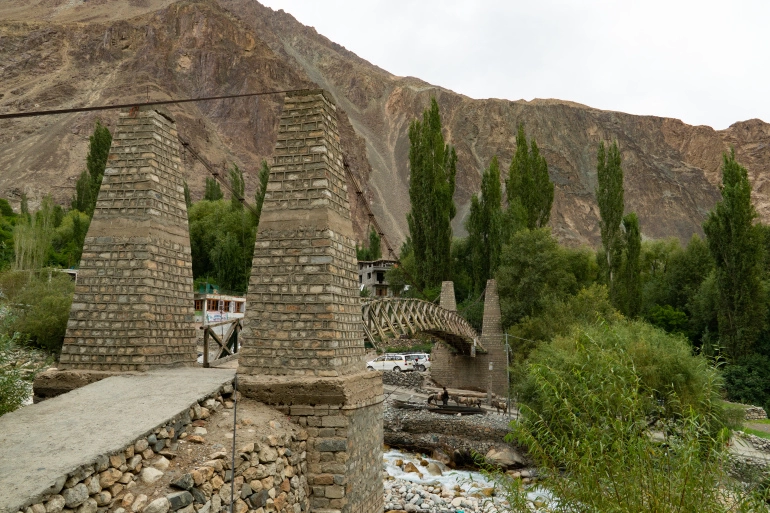
Post the border visit we visited Turtuk, which is the main village in this territory. Turtuk is probably the most beautiful village I have visited. This lush green village in the middle of this mountainous territory rivals most Swiss villages you could see. The beautiful fields and the super nice people make for a very tourist friendly village. What really makes it pop are the super cute kids.
Ladakhi kids anyway look super cute courtesy the reddish tinge on their cheeks. Here the kids know they are cute and actually demand money for pictures, which was something we did not want to encourage but we did get some cute pics
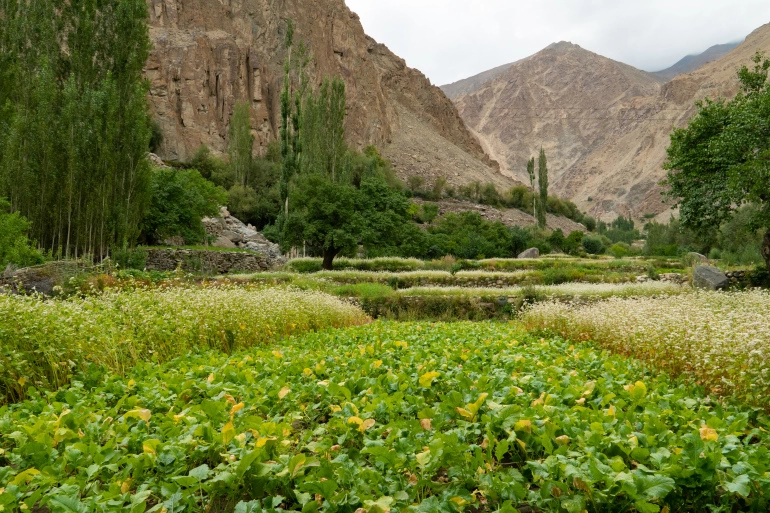
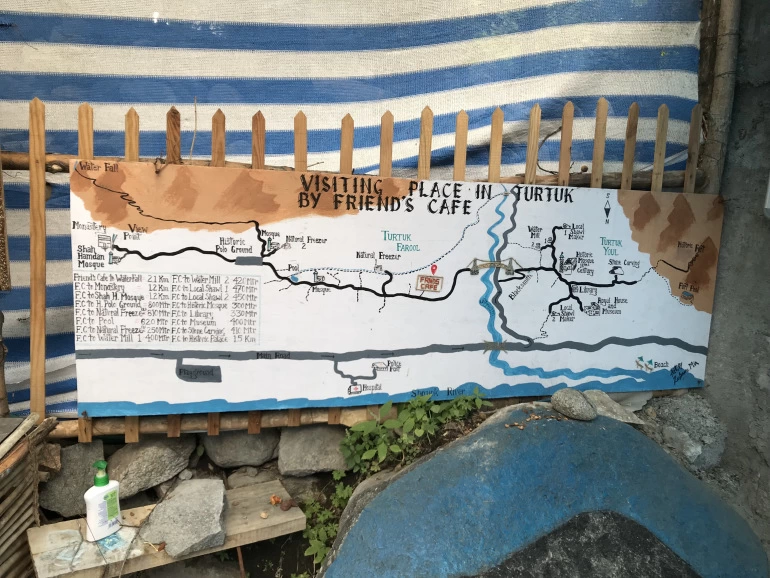
Since Turtuk is not really mapped out on maps suggest visiting one of the cafes on either side of the bridge where they have maps of the village featured prominently. Since we visited Friend's Cafe first, clicked the picture there. Which is where I also had this amazing bread made from local buckwheat called Kirris which was consumed with yoghurt and local flowers.
Turtuk's fields and vegetables against the mountains make for some nice pictures. We tried to cover as much as of Turtuk as we could in a day and that seemed quite enough time for this place though we did hear that the place has some good homestays. Lunch and photography done, we headed back to Hunder where we again watched the sand dunes and retired into our cozy tent.
Day 5: Visit to Pangong lake via Chang La and back to Leh
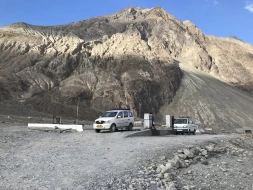
Our original itinerary had an overnight stay at Pangong, but a combination of extremely low temperatures and suggestions by Sonam from Mentokling, we decided to change it to a day trip. There also was an issue with some of the camps near Pangong courtesy them flouting some environment rules. We do suggest a visit to Pangong but try to stick to certified camps there as Pangong is getting impacted by tourist activity recently.
Day 5 we left for Pangong Tso. Pangong lake is one of the most beautiful places on earth made famous by 3 idiots. It is surprising that though we had visited so many places across the world, we had not visited this place. While we blame the altitude for it. One major reason is the remoteness of the place and the lack of public transport which is what we depend on on travelling wherever the quality of public transport is good. In Turtuk, we encountered a couple of women stranded because there was no way to get back to Hunder. Also most of the major routes in Ladakh have bad roads courtesy the weather. The army BRO which keeps many critical routes alive also faces issues in terms of supplies as they are dependent on a very circuitous road which gets blocked during winter. The upcoming train will help Leh Ladakh and even Himachal Pradesh as Reckong Peo supposedly as beautiful as Ladakh will benefit.
Chang La was not as amazing as Khardung La mainly because of the lack of snow and it being a bright day but the prospect of a bright day after some cloudy days excited us because the temperature at Pangong was higher and the clouds had dissipated
Pangong is the most beautiful part of Ladakh, in fact considered one of the most beautiful sights in the world. We visited at a time when the tourist season was ending so it was relatively empty. Due to the high altitude, I was not comfortable carrying my tripod to the lake. I was carrying my polarising filter though and got some nice pictures of the clear water without reflections. Though the best picture clicked by either of us was this picture of the lake put on instagram by Ditta. She used an IphoneX. The shades of blues shown in the picture are actually how the place looked. Pangong is in effect a clear mirror which changes colours with the sun.
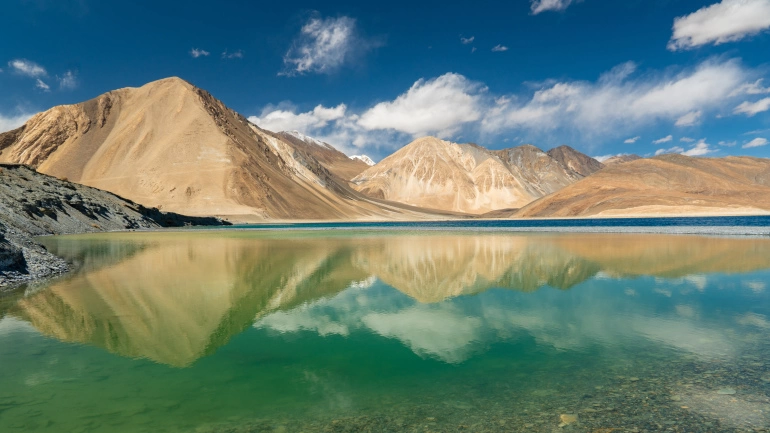
An advantage of doing a day trip to Pangong is that you don't really need more than a few hours to experience the place but I can clearly see the charm of living by the lake though nights can be tough as electricity switches off at 22:00 and heating isn't available at a lot of tents. We had originally booked a tent which had all the amenities but no heating at night and when the temperature dropped to 2 deg were advised not to do it as that temperature without heating would be unbearable. Note that travelling in tourist season i.e. Aug and before would give you better conditions
Pangong gives you amazing images and an unbelievable feeling as there are very few places as pristine as this. Thankfully there were not too many stalls close to the water and no one was littering the place. We also met a gull and a dog here who were most happily roaming around. We were worried about the dog considering the temperature which was dropping but he looked well fed so assuming someone takes care of him
Pangong's beauty is such that my wife did not want to move from there and I couldn't blame her. For such a high altitude the place is nice and warm and not uncomfortable but again do check with your doctor as it is 14,270 feet (4350 m) above sea level.Even if staying may not be an option, do visit once in your lifetime as the place is totally worth the tough roads you encounter.
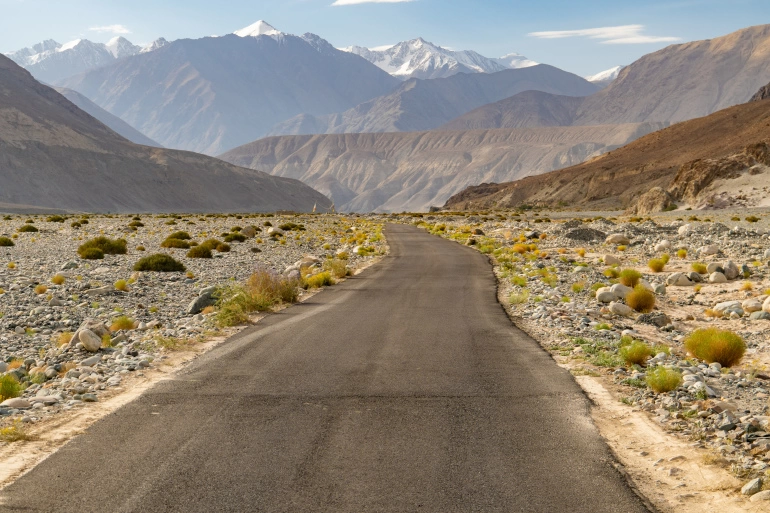
Pangong interestingly is also an international border between India and China (60% of the lake lies in China). for the bollywood inclined there also is the famous 3 idiots scooter there on which you can sit and take a picture though it pales in comparison to the actual beauty here. As with most of the world, please don't litter these places. The same Indian tourists who carry their rubbish around with them outside India, think nothing about dumping trash on the roads in Ladakh. We found everything from an empty bottle to a shoe in the middle of nowhere. Ladakh is clean courtesy it's residents who pick up dirt that tourists drop. But it is quite unfair to them
The return via Chang La was quite uneventful. It also meant the end of our short visit to Ladakh. A trip to Ladakh means unending roads and beautiful scenery. We had one last place to visit though called Thiksey monastery. Thiksey was beautiful and quite similar to the dzongs in Bhutan.
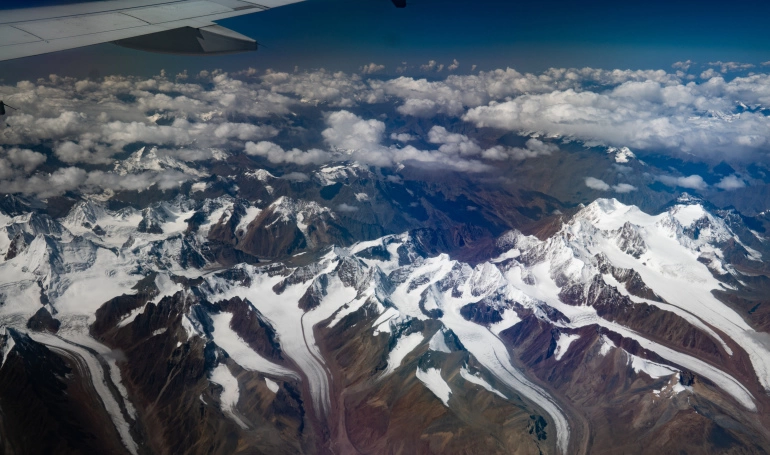
The last evening in Leh we went back to Bon Appetit, which had some delightful food. From the chalet style window, we saw the moonlit peaks and celebrated our last day. Back at Mentokling guesthouse, we finally asked for a heater and connected back to the rest of the world (higher speed internet and Tata Sky).
Bidding farewell to Ladakh we flew back via Delhi as there was no direct return flight to Mumbai. The view from the mountains is again amazing and honestly reason enough to fly to Leh. We survived Leh's high altitude and back breaking roads, enjoyed the food, complained about the lack of clean toilets but loved every bit of the trip.
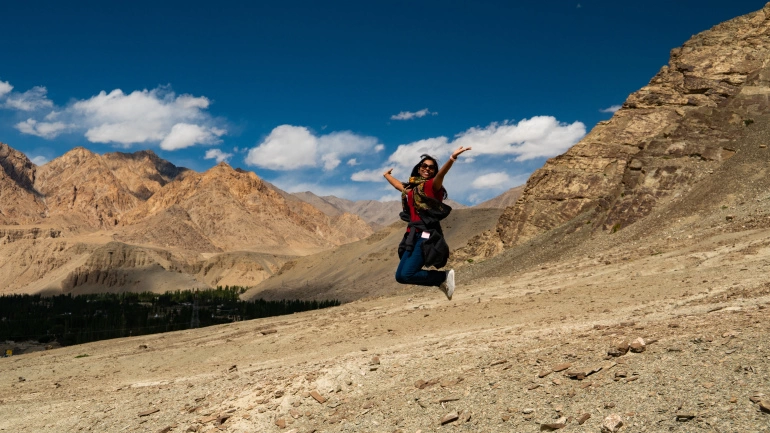
On Top of the world
Leh has sights and conditions which can be only experienced as describing them are near impossible. How we felt about the trip can be described by this one picture which describes what we felt
Happy travelling!
- Indi Tourists



















